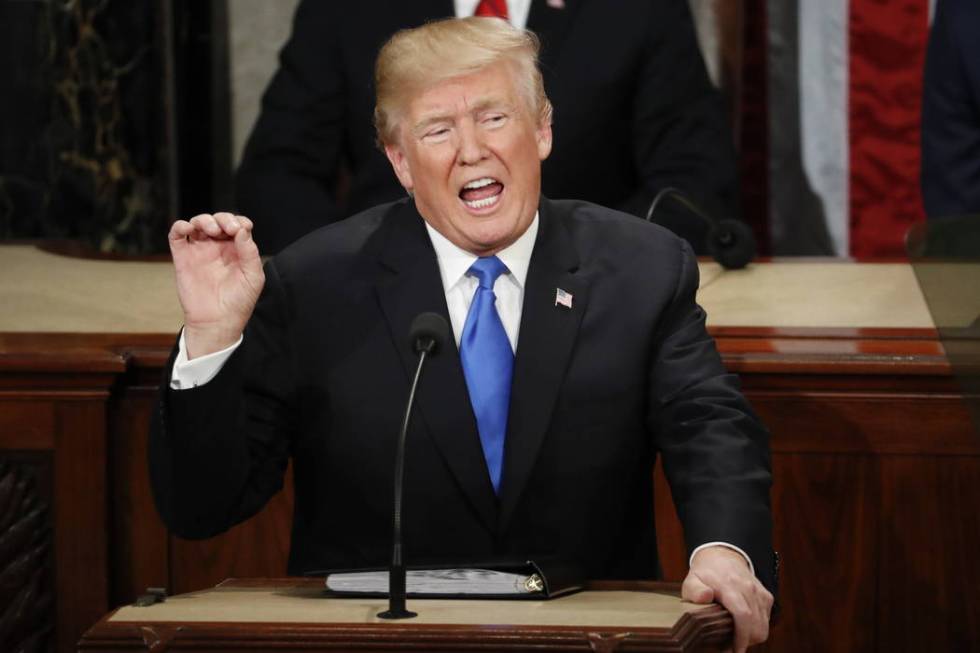National debt tops $22 trillion for first time

WASHINGTON — With the national debt now topping $22 trillion, Uncle Sam owes so much money that it would take almost 11 years to pay it all off if every American household put $1,000 a month toward the nation’s IOUs, according to the Peter G. Peterson Foundation.
The federal government’s red ink represents $126,000 for each household, or $49,000 per person, the foundation warned. America’s cumulative debt is greater than the gross domestic product of China, Japan and Germany combined.
“Our national debt is growing because of a structural mismatch between spending and revenues,” said Michael Peterson, the foundation’s CEO.
“The biggest drivers are the aging population, high health care costs and growing interest payments, combined with a tax code that fails to generate sufficient revenue,” Peterson said.
It’s bad, but “we don’t need to run around like this is an emergency,” said Marc Goldwein, senior policy director of the Committee for a Responsible Federal Budget.
“I don’t think we’re heading to a fiscal crisis tomorrow. People will still lend us money,” he said. The problem is “interest is the fastest growing part of the budget.”
A January report by the Congressional Budget Office projected that the ratio of debt to GDP will grow from 78 percent at the end of this year to 93 percent at the end of 2029.
Fiscal hawks warn that within the decade, Washington will be spending more to pay off debt than it spends to care for children and more on interest than on defending the country.
“I would pin the blame on both parties,” said Curtis Kalin of the fiscal watchdog Citizens Against Government Waste.
“The fatal flaw in both parties is that they both have sacred cows in terms of policies and programs in the federal government that they won’t touch.” As a result, Kalin said, “what happens is, in any negotiation, both sides take the big-ticket item off the table, and then they argue about the small thing.”
The national debt is the total of the annual budget deficits. America’s IOUs roughly doubled under President Barack Obama — a point candidate Donald Trump liked to mention. The national debt was at $10.6 trillion when Obama took the oath of office in 2009 and rose to $19.9 trillion by the time Trump took office in 2017.
But budget experts are quick to offer that Obama inherited the Great Recession, which caused both President George W. Bush and Obama to offer up expensive stimulus packages that drove up the annual deficit. In his second term, Obama reined in federal spending. So while Obama’s 2010 deficit approached $1.3 trillion, the 2014 deficit was significantly smaller at $485 billion.
In April 2016, then-candidate Trump told The Washington Post that he would eliminate the national debt — then around $19 trillion — in eight years.
Months later, Trump called himself “the king of debt,” a title that fit his many real estate acquisitions and big-spending persona.
In January, the CBO projected that the 2019 deficit would be about $900 billion, up from the $666 billion deficit for 2017.
“The president has a similar issue that numerous presidents have had,” Kalin offered. Congress puts omnibus spending bill “in front of him with pork barrel spending but no reform at all.” Trump has pushed to increase defense spending while saying he doesn’t want to touch entitlement spending.
“The fundamental problem is no one’s talking about it,” Kalin told the Review-Journal.
In his February State of the Union speech, Trump did not mention the national debt.
A previous version of this article misidentified the spokesman for Citizens Against Government Waste.
Contact Debra J. Saunders at dsaunders@reviewjournal.com or 202-662-7391. Follow @DebraJSaunders on Twitter